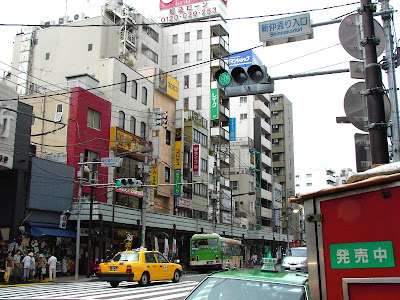Tokyo Downtown
Catastrophe or Equilibrium
Trends in the World through History
The rise and fall of an empire of a civilization is a common theme in study of history.
If you understand this phenomenon well, you can change your view on the world and your own life. At least you would never believe a 1000 year prosperity of Nazi Germany, 10,000 year dominance of the Soviet Union, or eternal supremacy of the British Empire.
But, rises of some entities in history have been so remarkable, that their falls look so significant in study of the world. Especially, a state of economy in each major nation presents examples easy to comprehend.
http://en.wikipedia.org/wiki/Nikkei_225
http://en.wikipedia.org/wiki/Dot-com_bubble
http://markttechnik.wordpress.com/langfristcharts/dow-jones-seit-1927-bmp/
http://en.wikipedia.org/wiki/Crude_oil
http://en.wikipedia.org/wiki/Euro
http://articles.businessinsider.com/2011-07-20/markets/30086779_1_market-day-dow-decline-overlay
As long as population of the whole mankind is growing, economy will be expanded as a whole on the earth. Japanese economy has been saturated due to its limited size of the land; the US economy and Chinese will even face saturation. But the world is larger than Japan, America, or China. The total economy of mankind will continue to grow for decades at least.
Global Total GDP
http://gsociology.icaap.org/report/econ/econsum.html
But, there will be a drastic change in paradigms of economy and society when growth of human population on the earth has stopped.
Global Population
http://www.marketcalls.in/analysis/population-vs-global-warming-interesting-facts-and-charts.html
Yet, as so often discussed, a great catastrophe in the nature could destroy the whole economy and maybe civilizations on the earth. The presently identified greatest threat from the nature is the global warming.
http://www.marketcalls.in/analysis/population-vs-global-warming-interesting-facts-and-charts.html
So, let's see some example of a drastic rise and a fall of living things.
This is the population graph of yeast cells in a 10% sugar solution. Note that the yeast population first explodes exponentially, and is then followed by population die-off as the finite nutrients are exhausted and their own waste products pollute their environment. http://sunson.livejournal.com/171551.html
Nonetheless, over and over again, a cycle of a rise and a fall has been repeated in the human history.
American Home Values
http://aquastock.exblog.jp/i18
So, some theories are presented to analyze the state of the growth/fall cycles and changes in contents of the phenomenon.
The sigmoid (depth-1) segments from the year of 1550 when the modern civilization established into bicentennial long phase of 'nationalization', 'industrialization', and 'informatization'.
The key to understanding these phenomena is entropy. While a scale and a level of material and energy undergo the cycles of a rise and a fall, entropy goes up steadily to be saturated in a closed space or system such as the earth.
As the above figure indicated, in a closed space such as the earth, any human activities would result in a halt where equilibrium is attained. This equilibrium is between the allowable limit of entropy in the space, possible consumption of energy and resources available in the space, and stability supported by causality linked in systems working in the space. If this equilibrium is lost, the whole civilization will collapse. In the case, the equilibrium can be just a top, flat, and short portion in the above curve of the population graph of yeast cells.
While a civilization is growing, it causes great disorder around it. While a big city is being built, wastes from consumption of the city are being discharged to its peripherals, increasing total entropy. While a civilization is falling, it causes great disorder inside and around it. While a big city is falling, debris from structures will increase total entropy inside and outside the city.
The Western Roman Empire followed this rule. And, today, with great power of GDP and money beyond comparison with the Roman Empire, the whole world is increasing and accelerating an increase of entropy. Entropy due to use of material and energy can be somewhat controlled by development of science and technology. But, entropy simply expanding due to GDP and money cannot be simply contained. That is why we need a new paradigm, philosophy, or religion to cope with a possible great fall of today's total civilizations on the earth.
An individual economy in the world will rise and fall in many times. But, the whole human population, the balance of the nature, the limit of cultural development of mankind, and so on might eventually lead to a fatal catastrophe to all the mankind while entropy of the earth is simply growing toward an equilibrium level which is also beyond our imagination of today.
(to be continued...)
*** *** *** ***
Mat 11:12 And from the days of John the Baptist until now the kingdom of heaven suffereth violence, and the violent take it by force.
Mat 11:13 For all the prophets and the law prophesied until John.
Mat 11:14 And if ye will receive it, this is Elias, which was for to come.
Mat 11:15 He that hath ears to hear, let him hear.








































